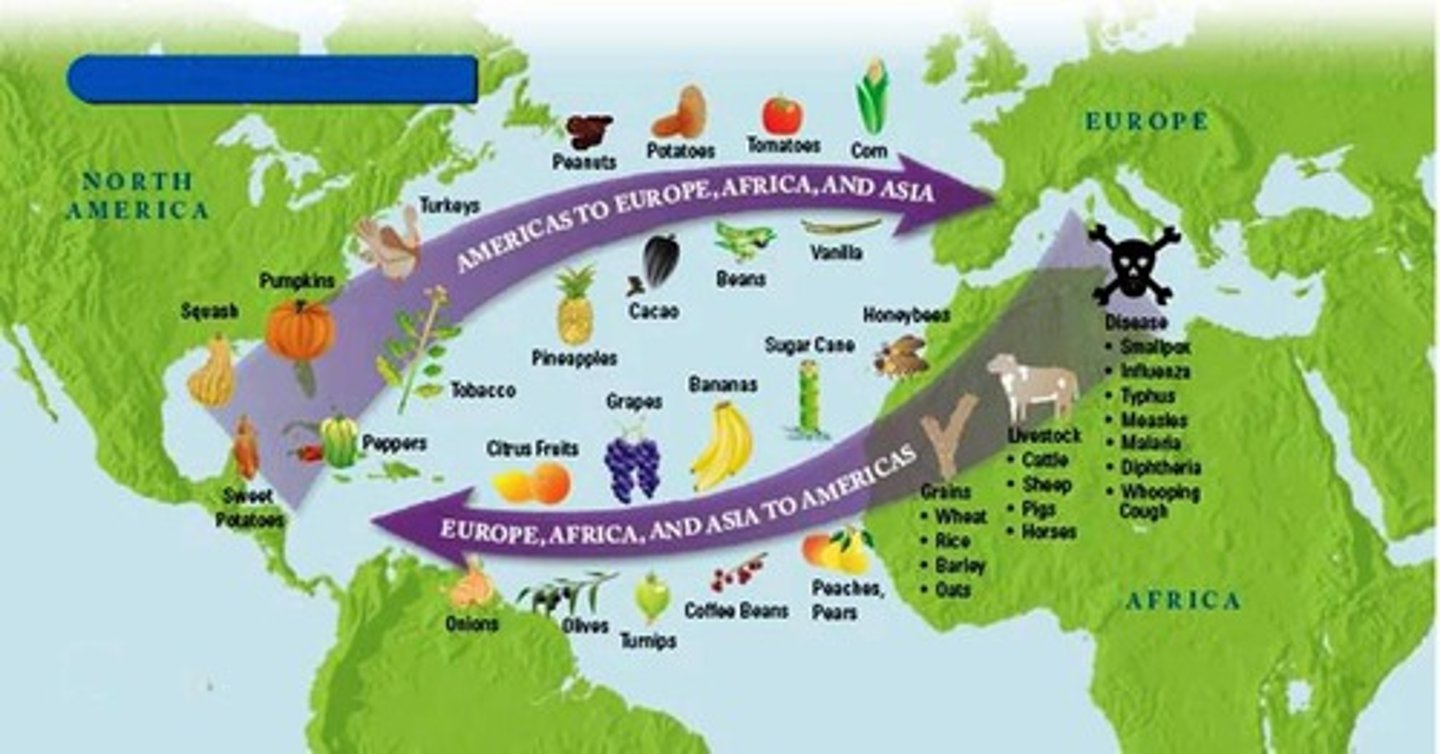Era 2, 1450 -1750 CE: The Columbian Exchange + Triangular Trade (Quizlet Unit #9)
1/28
There's no tags or description
Looks like no tags are added yet.
Name | Mastery | Learn | Test | Matching | Spaced |
|---|
No study sessions yet.
29 Terms
1. The Columbian Exchange and Maritime (Ocean) Exploration
-After seeing Marco Polo's profits, the Western Europeans were motivated to explore to get to China and the Europeans take to the oceans in order to begin exploration
-Christopher Columbus "discovers" (ran into) the New World accidentally, begins the Trans Atlantic slave trade with indigenous Americans-Once Columbus returns to Europe, Europeans return to the Americas and begin to colonize it; this sets off a MASSIVE exchange of goods, foods, diseases, and other things known as the______________________
-Approximately 10- 12 million Africans were enslaved and transported across the Atlantic from 1500 to 1900 CE. They were forced into chattel slavery upon arrival in the Americas and became enslaved persons [slaves].
-There was also the Triangular Trade--trade between Europe, Africa, and the Americas. On a map it appears in the shape of a triangle
-There was also a large growth in maritime (ocean) exploration as the Europeans also set up Trading Post Empires in Africa and Asia
-This is the name of the unit + the words Maritime (Ocean) Exploration
![<p>-After seeing Marco Polo's profits, the Western Europeans were motivated to explore to get to China and the Europeans take to the oceans in order to begin exploration</p><p>-Christopher Columbus "discovers" (ran into) the New World accidentally, begins the Trans Atlantic slave trade with indigenous Americans-Once Columbus returns to Europe, Europeans return to the Americas and begin to colonize it; this sets off a MASSIVE exchange of goods, foods, diseases, and other things known as the______________________</p><p>-Approximately 10- 12 million Africans were enslaved and transported across the Atlantic from 1500 to 1900 CE. They were forced into chattel slavery upon arrival in the Americas and became enslaved persons [slaves].</p><p>-There was also the Triangular Trade--trade between Europe, Africa, and the Americas. On a map it appears in the shape of a triangle</p><p>-There was also a large growth in maritime (ocean) exploration as the Europeans also set up Trading Post Empires in Africa and Asia</p><p>-This is the name of the unit + the words Maritime (Ocean) Exploration</p>](https://knowt-user-attachments.s3.amazonaws.com/d9b801af-7c99-4415-b85e-b547fb5376a0.jpg)
2. Caravels
-The Portuguese were the European country that was most motivated to explore the oceans in the 1400s and 1500s
-The Portuguese built these long ships that were very maneuverable and could sail against the wind
-Once they invented/developed these ships, they were able to explore and start trading post empires in Africa and Asia
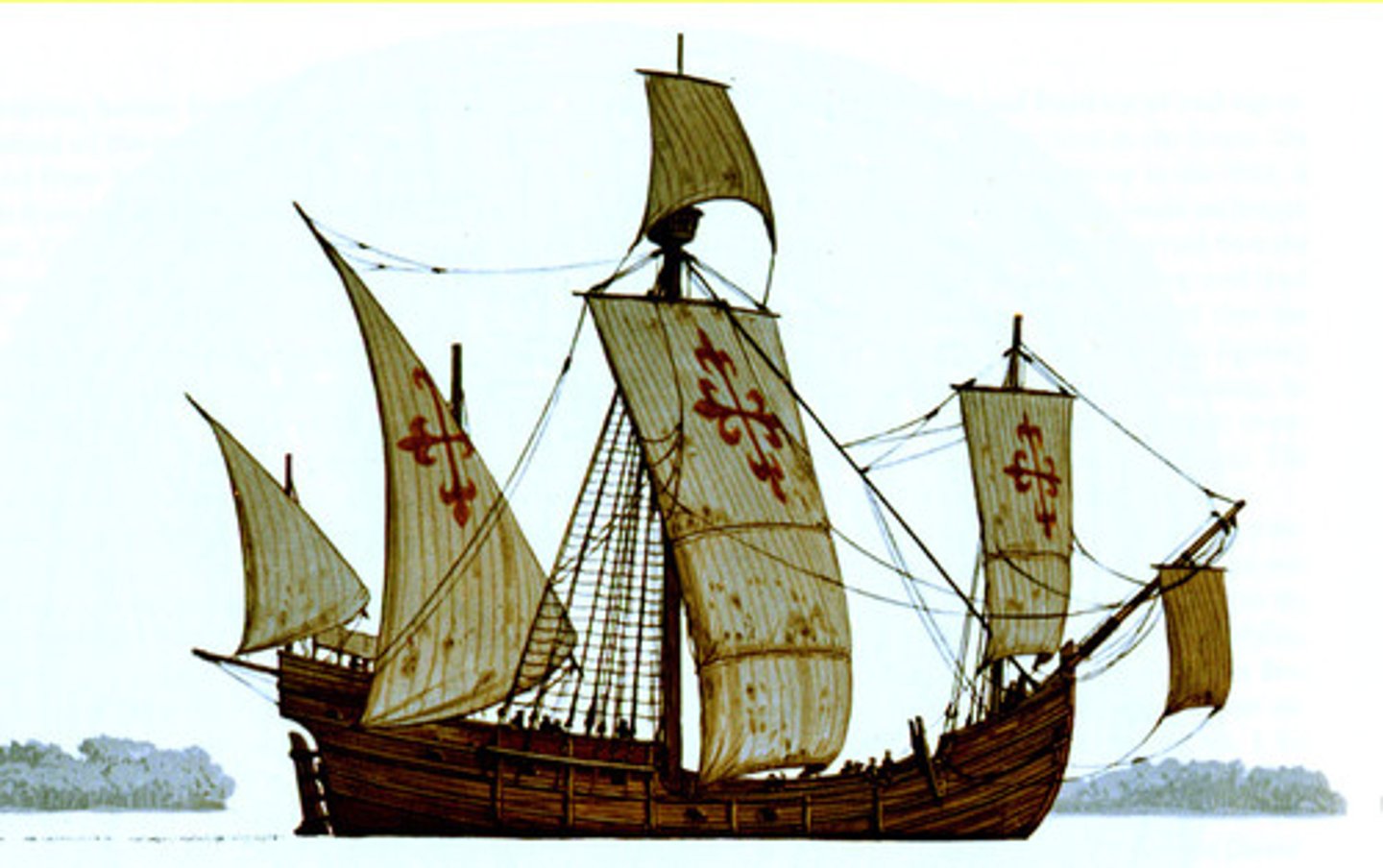
3. Diffusion of Sailing Technology to the Europeans, 1450 - 1750 CE
-During the 1400's and 1500's, the Europeans began borrowing sailing inventions from other cultures, in particular Asia and the Muslims in the Middle East; so they could sail across the Atlantic and around Africa
-The following sailing technologies diffused (spread) to the Europeans and made them far more powerful
-The magnetic compass (from China)
-The Astrolabe (perfected by the Arabic Muslim Sea traders in the Indian Ocean basin and Mediterranean)
-Astronomical Charts used with the astrolabe (perfected by the Arabic Muslim Sea traders in the Indian Ocean basin and Mediterranean)
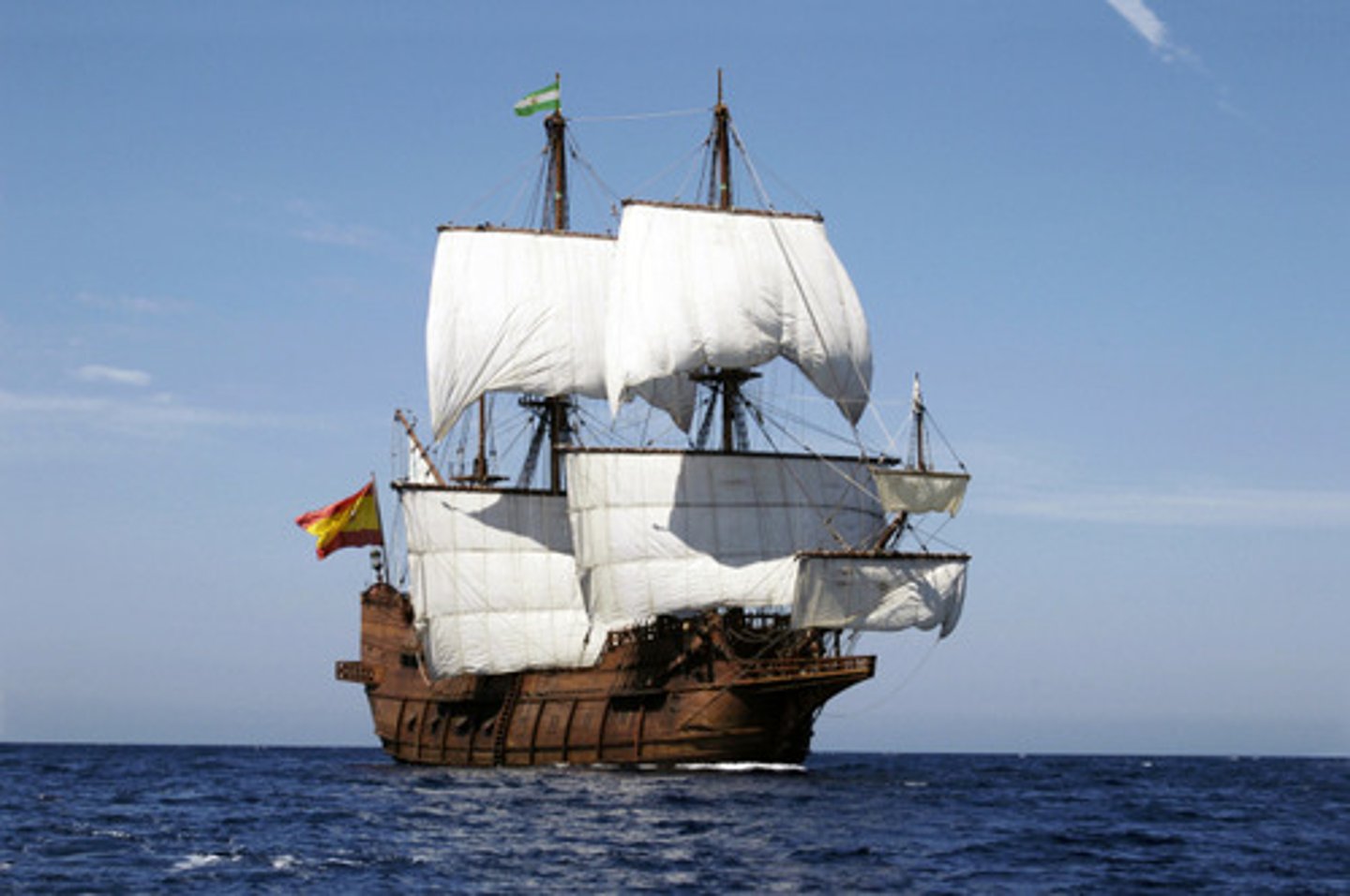
4. Magnetic Compass + Astrolabe
-During the 1400's and 1500's, the Europeans began borrowing sailing inventions from other cultures, in particular Asia and the Muslims in the Middle East; so they could sail across the Atlantic and around Africa
-These were nautical (sailing) inventions that were absolutely key for European exploration
-One was borrowed from China (Tang/Song invention) and had diffused to the Europeans; it helped them find their direction on the ocean
-The second invention was the _______________; this was a Greek invention and helped them use the stars to find their latitude (location) on a map
-The ast________________ was perfected and used by Muslim sailors; they used the ast__________________ along with astronomical charts to help guide sailors and find their way; this technology spread to the Europeans from 1450-1750, who used it to navigate the globe and establish their maritime (sea based) empires and trading posts
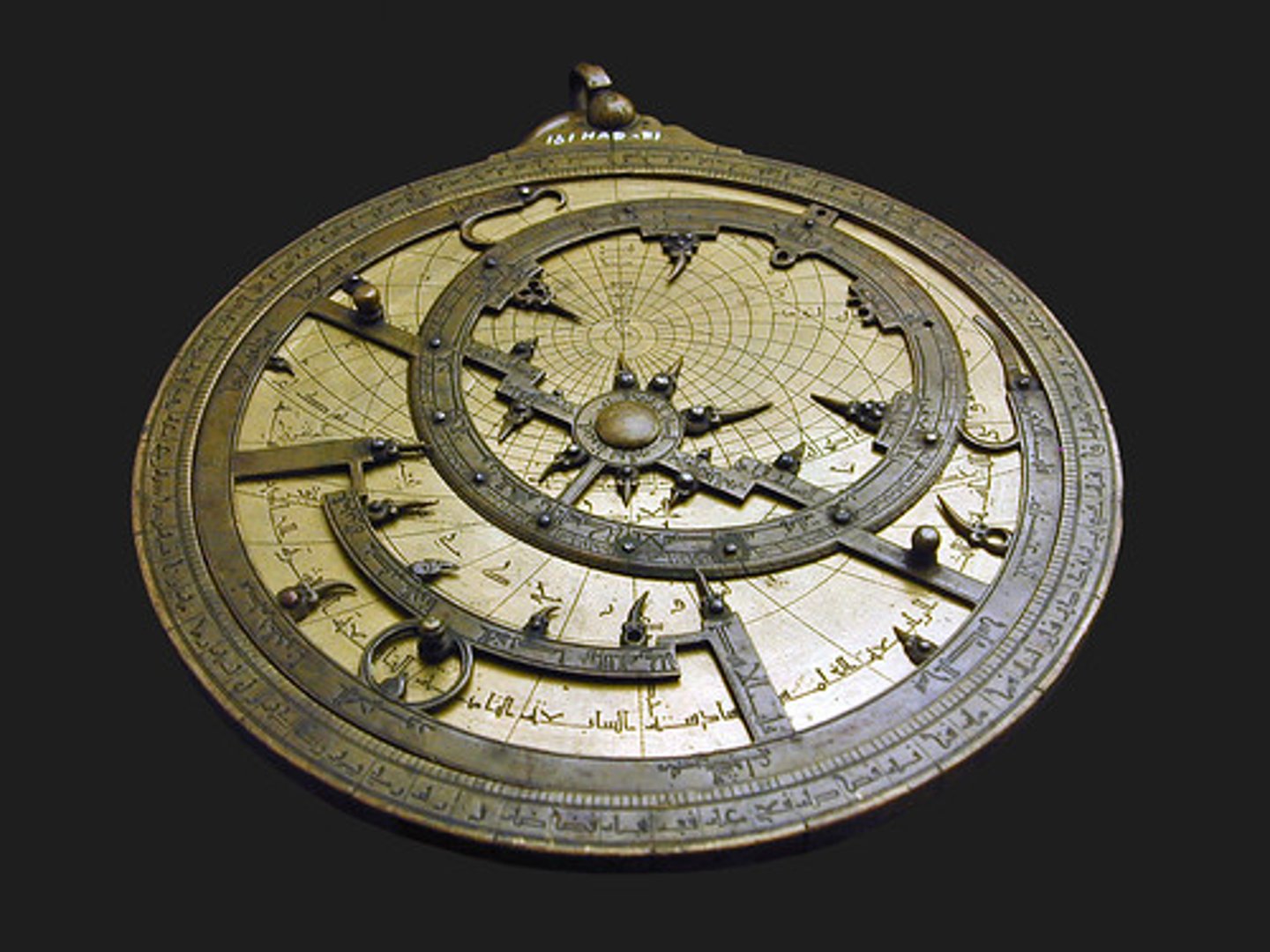
5. Astronomical Charts
-During the 1400's and 1500's, the Europeans began borrowing sailing inventions from other cultures, in particular Asia and the Muslims in the Middle East; so they could sail across the Atlantic and around Africa
-Muslim sea traders in the Indian Ocean Basin and Mediterranean Sea had perfected the use of the Astrolabe in order to use the stars to navigate and find their way
-The astrolabe needed to be used in combination with astronomical charts so that you could find your way
-This technology and knowledge diffused (spread) from the Muslim Sea traders to the Europeans from 1450-1750, who used it to establish trading posts and eventually establish maritime empires
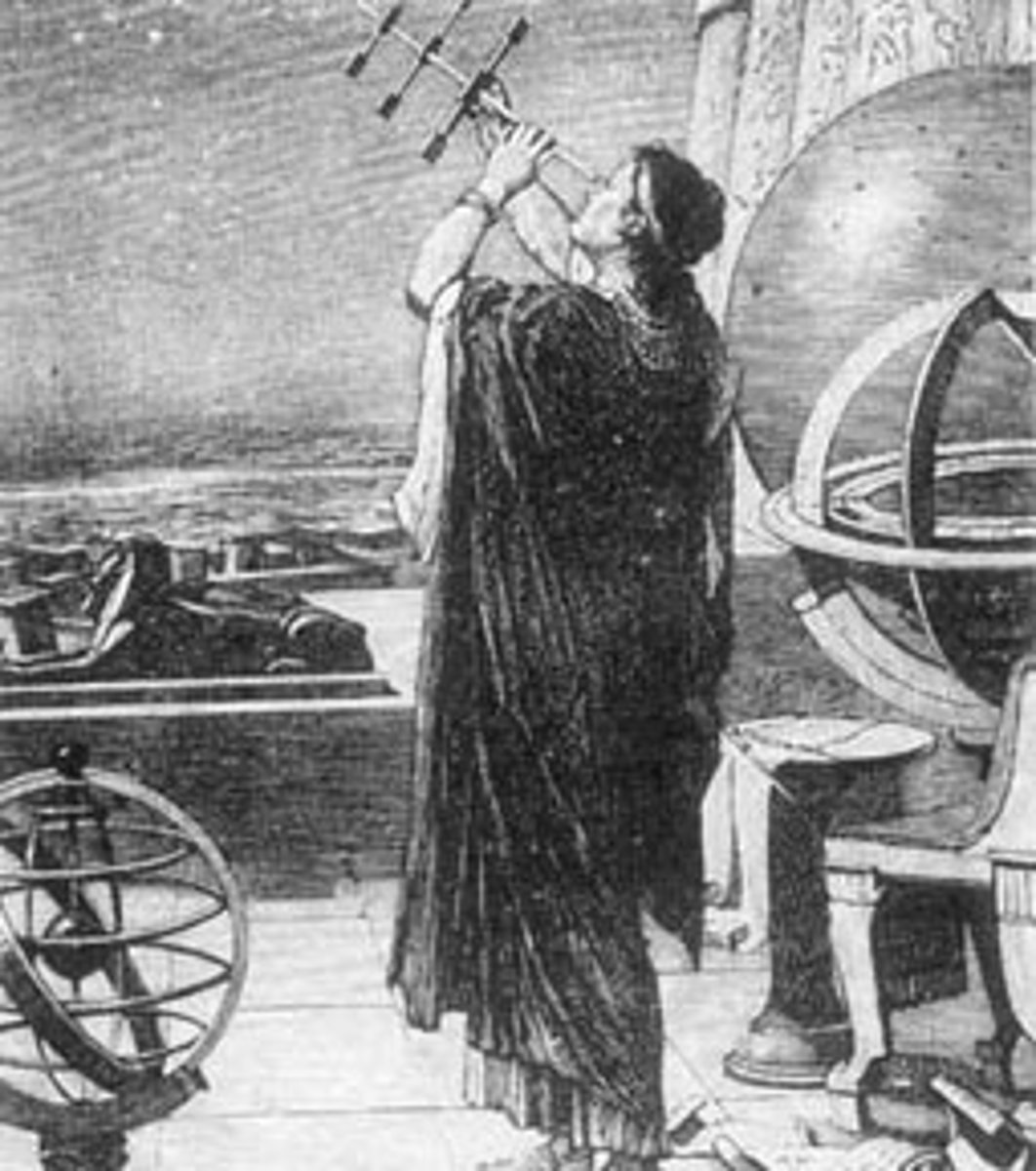
6. Volta do Mar
-As they became powerful ocean explorers, the Europeans began to learn that the winds and currents on the ocean moved in the same pattern every year
-They could take advantage of these patterns when they sailed; if they were headed in the right direction at the right time of year, they could catch the winds at their back
- The ________________________ was a wind pattern that the Portuguese used to help them sail more quickly to and from Portugal
-The ___________________________ was so useful that all the European ships started to use this principle as they sailed all around the world, learning the different wind currents and patterns.
-Translates into "Return through the Sea."
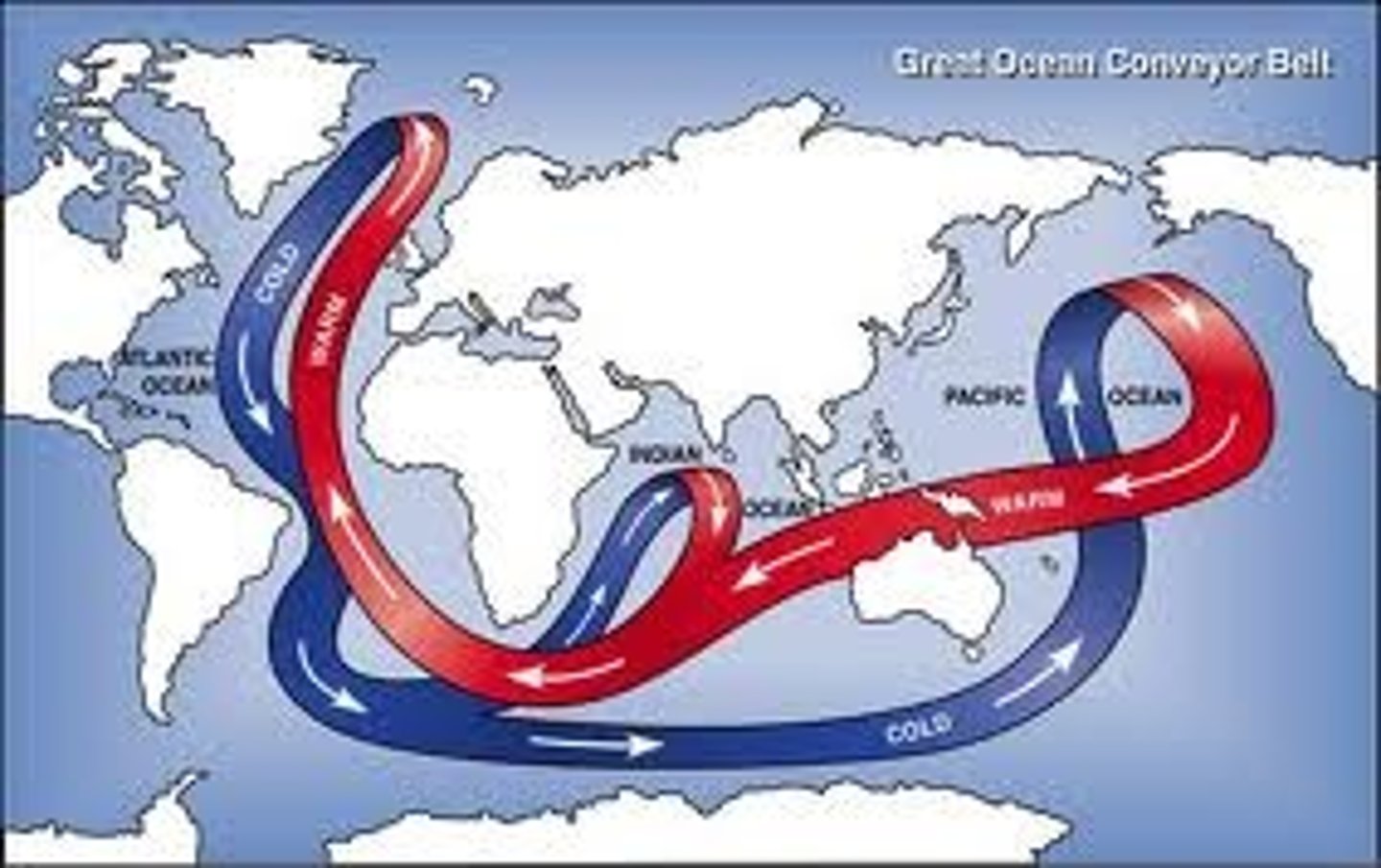
7. Square and Lateen Sails
-The Europeans needed to be able to sail in different types of wind in their caravels
- ______________________ sails (the first term) allowed them to use a following wind (a wind blowing from behind)
- ________________ sails, which were triangular, allowed them to catch winds from the side and ships like caravels could even sail INTO the wind
-Use of both of these types of sails were KEY as the Europeans like de Gama, Columbus, Dias, and Magellan embarked on expeditions around the globe
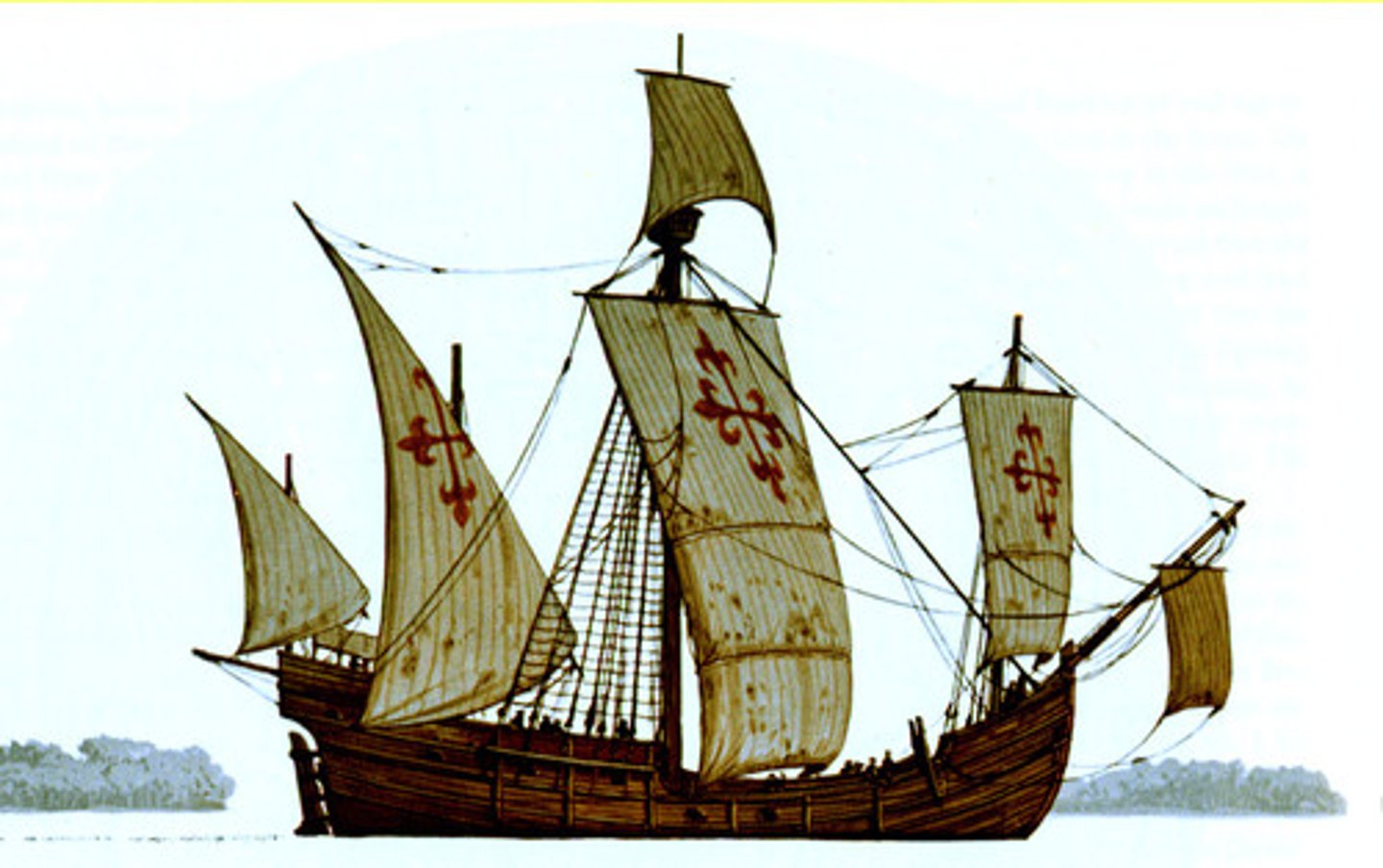
8. Carrack and Fluyt
--The Portuguese were the European country that was most motivated to explore the oceans in the 1400s and 1500s
-The carr________ (not the caravel!)was another ship design used by the Portuguese, Dutch, and other countries that were exploring
-The carr_______ was crucial for the Portuguese to increase their trade and be able to govern their Trading Post Empire
-The Fl________ was a ship used by the Dutch to make them extremely competitive in global trade from 1450 -1750. The Fl_______ cost half as much to make as its competitors, but could carry twice the cargo!
-The Fl_________ gave Dutch merchants an advantage over their competition since they could sail faster and farther while carrying more cargo
-Both of these ships made Transoceanic travel and trade possible for the Portuguese and Dutch, giving them a big advantage in trade and empire building!
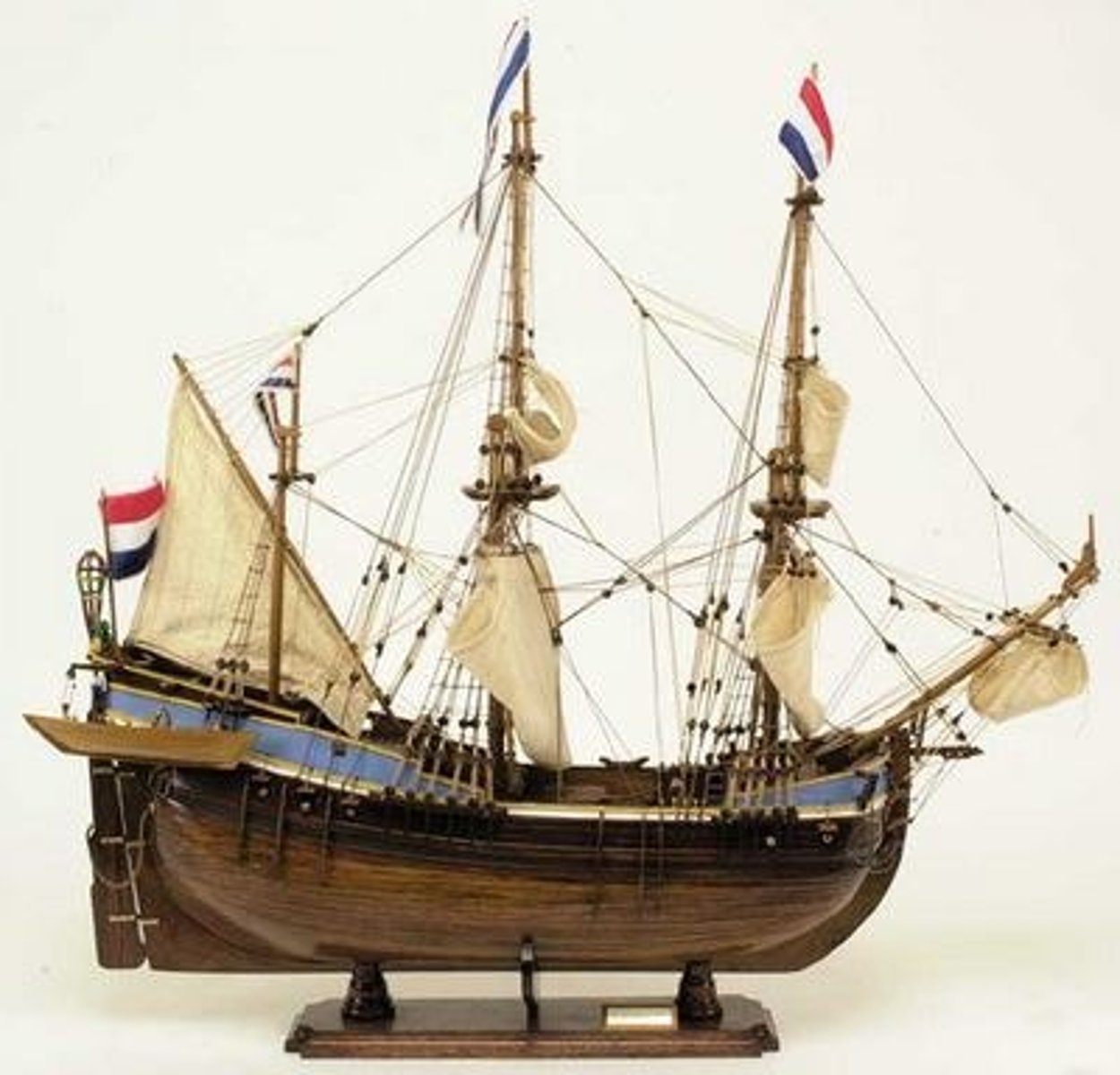
9. Prince Henry the Navigator 1450 CE
-This Portuguese ruler started a school for navigation and sailing to promote Portuguese sailing and exploration on the ocean
-As Prince, he sponsored many of the first Portuguese voyages to explore the coast of Africa and find an ocean route to China
-Sponsored [paid for] the building of many caravel ships so that the Portuguese could explore
-Sponsored [paid for] the construction of Portuguese trading posts in West Africa
-After his death, Bartolomeu Dias and Vasco de Gama would successfully round the Cape of Good Hope of Africa
![<p>-This Portuguese ruler started a school for navigation and sailing to promote Portuguese sailing and exploration on the ocean</p><p>-As Prince, he sponsored many of the first Portuguese voyages to explore the coast of Africa and find an ocean route to China</p><p>-Sponsored [paid for] the building of many caravel ships so that the Portuguese could explore</p><p>-Sponsored [paid for] the construction of Portuguese trading posts in West Africa</p><p>-After his death, Bartolomeu Dias and Vasco de Gama would successfully round the Cape of Good Hope of Africa</p>](https://knowt-user-attachments.s3.amazonaws.com/4dde3749-4ce5-49d3-a188-1290330adf11.jpg)
10. Vasco de Gama (voyages 1498-1524)
-this Portuguese explorer was the first European sailor to sail around Africa in 1498 and make it to India
-When he arrived in India, he traded for spices, brought them back, and sold his spices for a MASSIVE profit
-The voyage was successful beyond the wildest dreams of anyone's imagination; he turned a profit 60 times the cost of the voyage
-He used the volta do mar wind currents in his caravel to push himself faster and further to India
-When he arrived in India, the kings there thought his trade goods were so weak and poor that he could not have possibly been sent by a King
-Although he made money, over half of de Gama's crew died from scurvy
-His profits were so massive that it inspired the rest of the Portuguese to try and start the Portuguese Trading Post Empire in the 1500s
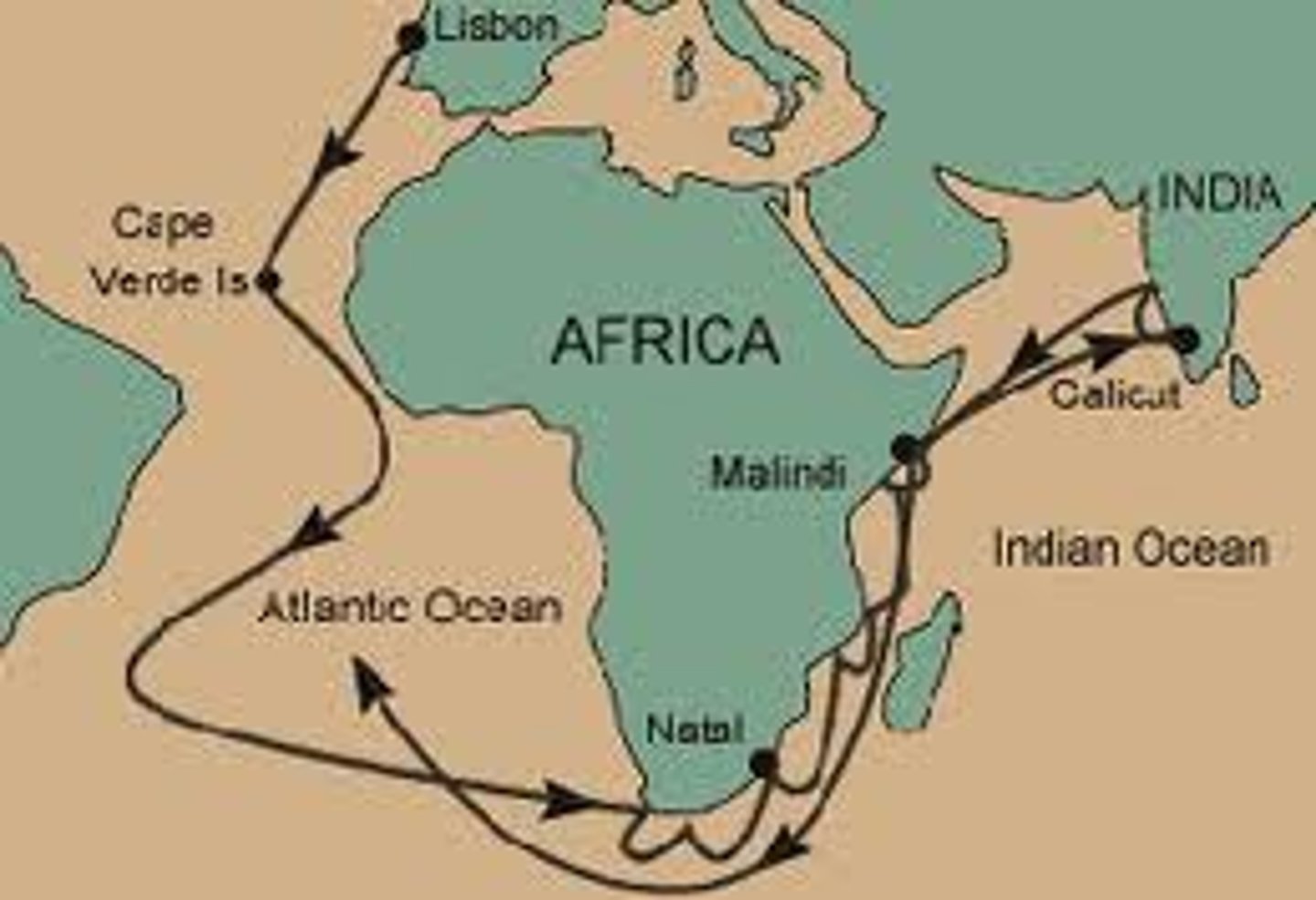
11. Ferdinand Magellan 1521
-Portuguese navigator and sailor who led the Spanish expedition of 1519-1522 and attempted to circumnavigate the world
-Circumnavigate means they tried to sail around the world
-Left from Portugal and went south of the souther tip of South America. They made it across the Pacific to the Philippines
-In the Philippines, Magellan tried to force the Filipinos to convert to Christianity and supply him with food and water. A Filipino Chief named Lapu-Lapu refused to obey and Magellan tried to force him into obedience
-Despite facing the Spanish with superior weapons and armor, Lapu-Lapu and his warriors fought and killed an overconfident Magellan at the Battle of Mactan, buying a generation of Filipinos freedom from oppression
-Magellan's sailors sailed on. After three years they completed the journey around the world. Of the 270 sailors that began the trip, only 18 survived the journey
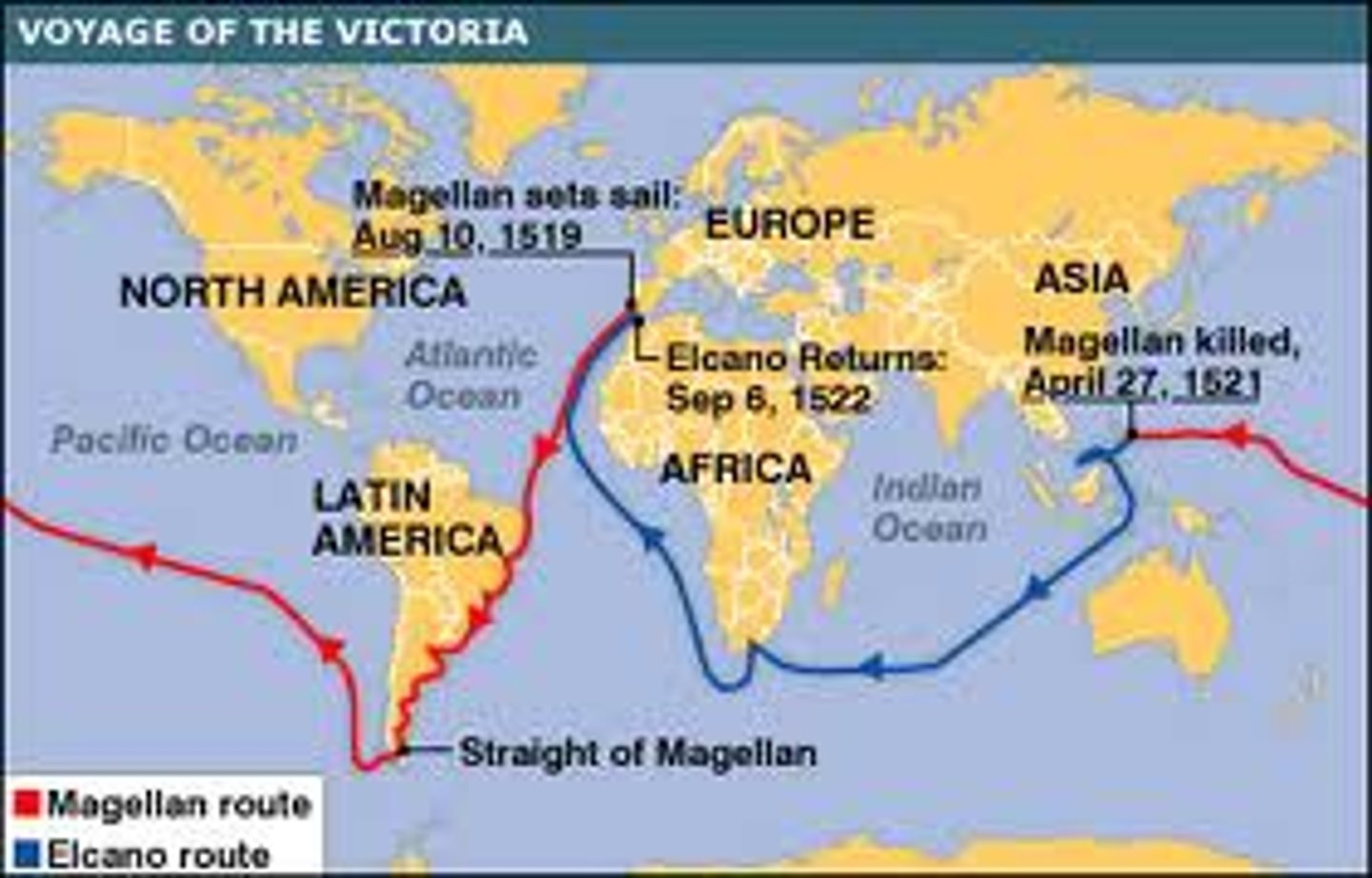
12. Portuguese Trading Post Empire 1450 -1750 CE
-After the successful voyage of de Gama in his caravels, the Portuguese saw that there were ENORMOUS profits to be made in the spice trade with India and the silk trade with China
-Instead of taking the silk roads, the Portuguese built ________________ along the coasts of Africa and India
-By 1550, the Portuguese had built more than fifty trading posts between West Africa and East Asia.
-They had superior canon to the Muslim and Asian boats and tried to force all other boats to buy a pass from the Portuguese
-If an Arabic or Asian boat was found without a pass, they would be executed or their hands would be cut off
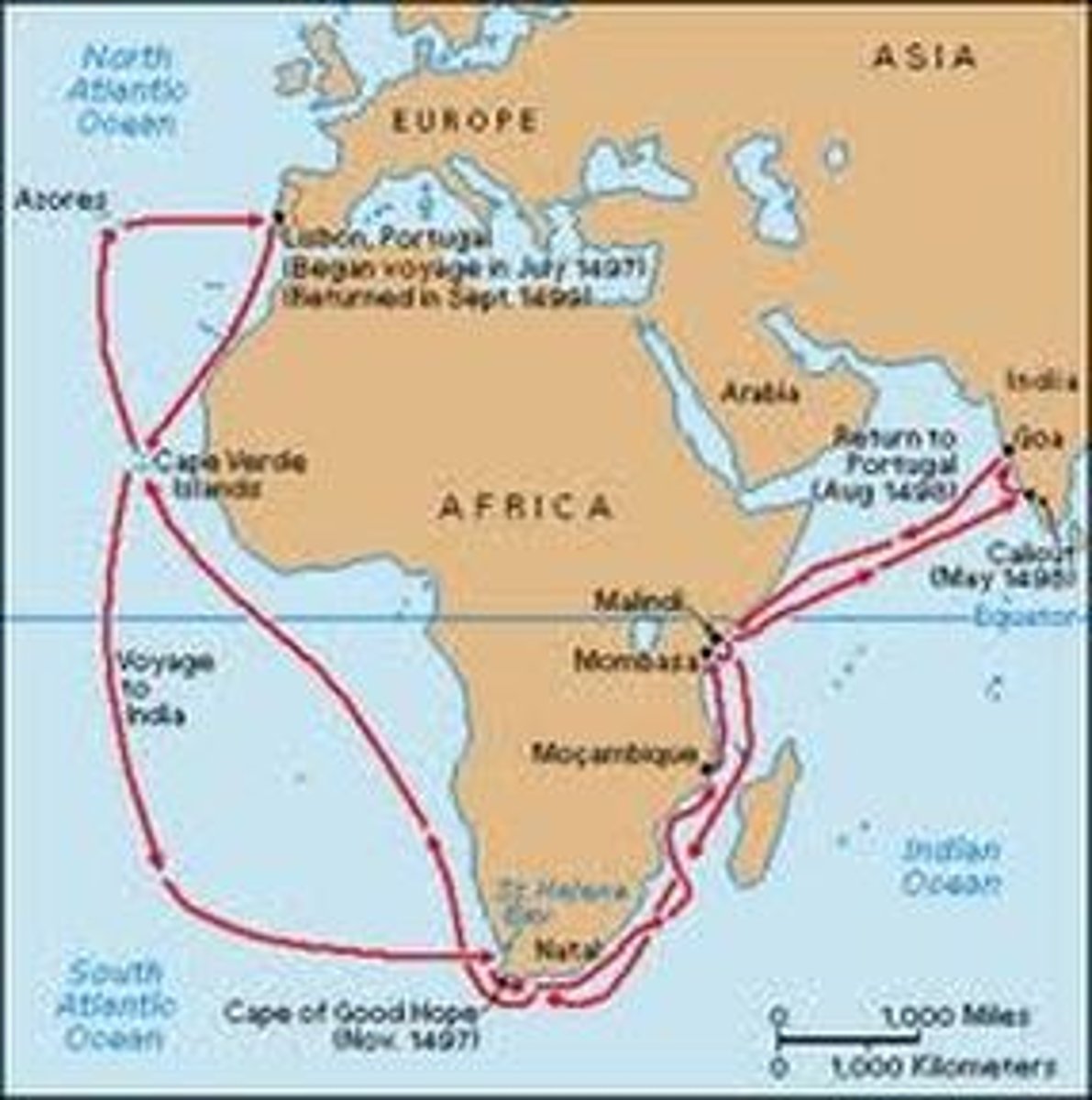
13. Safe Conduct Passes --Portuguese Trading Post Empire
-By 1550, the Portuguese had built more than fifty trading posts between West Africa and East Asia. This was the maritime (ocean) Portuguese Trading Post Empire
-They had superior canon to the Muslim and Asian boats and tried to force all other boats to buy a pass from the Portuguese
-They tried to force the Muslim and Asian traders to buy a _______________________ pass if they wanted to trade in the Indian Ocean
-If an Arabic or Asian boat was found without a pass, they would be executed or their hands would be cut off by the Portuguese
-The architect [designer] of this aggressive policy was Afonso d'Alboquerque
-The Portuguese had trouble enforcing it as many Arabic and Asian traders refused to buy the passes and tried to make their way past the Portuguese anyways
-This term is the name of the pass they had to buy!
![<p>-By 1550, the Portuguese had built more than fifty trading posts between West Africa and East Asia. This was the maritime (ocean) Portuguese Trading Post Empire</p><p>-They had superior canon to the Muslim and Asian boats and tried to force all other boats to buy a pass from the Portuguese</p><p>-They tried to force the Muslim and Asian traders to buy a _______________________ pass if they wanted to trade in the Indian Ocean</p><p>-If an Arabic or Asian boat was found without a pass, they would be executed or their hands would be cut off by the Portuguese</p><p>-The architect [designer] of this aggressive policy was Afonso d'Alboquerque</p><p>-The Portuguese had trouble enforcing it as many Arabic and Asian traders refused to buy the passes and tried to make their way past the Portuguese anyways</p><p>-This term is the name of the pass they had to buy!</p>](https://knowt-user-attachments.s3.amazonaws.com/f90ecba8-2d72-4976-b1f7-d27c6b56ea17.jpg)
14. Afonso d'Alboquerque
-By 1550, the Portuguese had built more than fifty trading posts between West Africa and East Asia. This was the maritime (ocean) Portuguese Trading Post Empire
-They had superior canon to the Muslim and Asian boats and tried to force all other boats to buy a pass from the Portuguese
-They tried to force the Muslim and Asian traders to buy a _______________________ pass if they wanted to trade in the Indian Ocean
-If an Arabic or Asian boat was found without a pass, they would be executed or their hands would be cut off by the Portuguese
-The architect [designer] of this aggressive policy was _________________________________
-The Portuguese had trouble enforcing it as many Arabic and Asian traders refused to buy the passes and tried to make their way past the Portuguese anyways
-This term is the name of the architect of the policy!
![<p>-By 1550, the Portuguese had built more than fifty trading posts between West Africa and East Asia. This was the maritime (ocean) Portuguese Trading Post Empire</p><p>-They had superior canon to the Muslim and Asian boats and tried to force all other boats to buy a pass from the Portuguese</p><p>-They tried to force the Muslim and Asian traders to buy a _______________________ pass if they wanted to trade in the Indian Ocean</p><p>-If an Arabic or Asian boat was found without a pass, they would be executed or their hands would be cut off by the Portuguese</p><p>-The architect [designer] of this aggressive policy was _________________________________</p><p>-The Portuguese had trouble enforcing it as many Arabic and Asian traders refused to buy the passes and tried to make their way past the Portuguese anyways</p><p>-This term is the name of the architect of the policy!</p>](https://knowt-user-attachments.s3.amazonaws.com/a3095ccf-f9ba-4daa-8b51-f56701b5487e.png)
15. The Columbian Exchange
-Christopher Columbus "discovers" the New World accidentally
-Once the Americas are discovered, the Europeans begin to colonize it; this sets off a MASSIVE exchange of goods, foods, diseases, and other things known as the______________________
-American food crops like Potatoes, Maize, and Manioc were very nutritional and spread to Europe, Asia, and Africa and helped increase world population
-Diseases like Smallpox, Measles, and Influenza came from Europe and Africa and DECIMATED [destroyed] Amerindian populations
-The Trans-Atlantic Slave Trade began and resulted in the forced migration of 12 million West Africans to the Americas. As many as 2 million Africans died during the journey across the Atlantic, known as The Middle Passage, enduring horrifically inhumane conditions.
-Using enslaved labor, Cash Crops like Sugar and Tobacco were grown in the Americas and sent to European markets for massive profits
![<p>-Christopher Columbus "discovers" the New World accidentally</p><p>-Once the Americas are discovered, the Europeans begin to colonize it; this sets off a MASSIVE exchange of goods, foods, diseases, and other things known as the______________________</p><p>-American food crops like Potatoes, Maize, and Manioc were very nutritional and spread to Europe, Asia, and Africa and helped increase world population</p><p>-Diseases like Smallpox, Measles, and Influenza came from Europe and Africa and DECIMATED [destroyed] Amerindian populations</p><p>-The Trans-Atlantic Slave Trade began and resulted in the forced migration of 12 million West Africans to the Americas. As many as 2 million Africans died during the journey across the Atlantic, known as The Middle Passage, enduring horrifically inhumane conditions.</p><p>-Using enslaved labor, Cash Crops like Sugar and Tobacco were grown in the Americas and sent to European markets for massive profits</p>](https://knowt-user-attachments.s3.amazonaws.com/aaaa8d55-35db-41d2-aec0-8db7227fd9bd.jpg)
16. The Triangular Trade
-Once the Columbian Exchange took off, there was a massive amount of TransAtlantic trade that took off across the Atlantic Ocean
-The Europeans were sending manufactured goods to Africa, especially old and outdated guns
-The European merchants were taking enslaved persons [slaves] from Africa to the Americas to work the sugar and tobacco plantations
-They were bringing back raw materials from the Americas, such as sugar, tobacco, rice, indigo, maize, and other products
-if you look on a map, the trade routes from Europe --> West Africa-->Americas and then back to Europe makes a triangle
-This whole system and pattern of trade between Europe, Africa, and the Americas was known as the _______________________________________
![<p>-Once the Columbian Exchange took off, there was a massive amount of TransAtlantic trade that took off across the Atlantic Ocean</p><p>-The Europeans were sending manufactured goods to Africa, especially old and outdated guns</p><p>-The European merchants were taking enslaved persons [slaves] from Africa to the Americas to work the sugar and tobacco plantations</p><p>-They were bringing back raw materials from the Americas, such as sugar, tobacco, rice, indigo, maize, and other products</p><p>-if you look on a map, the trade routes from Europe --> West Africa-->Americas and then back to Europe makes a triangle</p><p>-This whole system and pattern of trade between Europe, Africa, and the Americas was known as the _______________________________________</p>](https://knowt-user-attachments.s3.amazonaws.com/544844b9-ba0d-440b-af20-1183fc647b57.jpg)
17. The Atlantic System
-Once the Columbian Exchange took off, there was a massive amount of TransAtlantic trade that took off across the Atlantic Ocean
-The Europeans were sending manufactured goods to Africa, especially old and outdated guns
-The European merchants were taking enslaved persons [slaves] from Africa to the Americas to work the sugar and tobacco plantations
-They were bringing back raw materials from the Americas, such as sugar, tobacco, rice, indigo, maize, and other products
-This whole system and pattern of trade between Europe, Africa, and the Americas was mainly known as the Triangular Trade.
THIS QUESTION IS NOT THE TRIANGULAR TRADE. THIS IS A FANCY TERM FOR THE TRIANGULAR TRADE, THE Answer is "The ___________________________ System"
-Basically--> European manufactured goods to Africa; --> enslaved Africans to the Americas --> raw materials from the Americas to Europe
![<p>-Once the Columbian Exchange took off, there was a massive amount of TransAtlantic trade that took off across the Atlantic Ocean</p><p>-The Europeans were sending manufactured goods to Africa, especially old and outdated guns</p><p>-The European merchants were taking enslaved persons [slaves] from Africa to the Americas to work the sugar and tobacco plantations</p><p>-They were bringing back raw materials from the Americas, such as sugar, tobacco, rice, indigo, maize, and other products</p><p>-This whole system and pattern of trade between Europe, Africa, and the Americas was mainly known as the Triangular Trade.</p><p>THIS QUESTION IS NOT THE TRIANGULAR TRADE. THIS IS A FANCY TERM FOR THE TRIANGULAR TRADE, THE Answer is "The ___________________________ System"</p><p>-Basically--> European manufactured goods to Africa; --> enslaved Africans to the Americas --> raw materials from the Americas to Europe</p>](https://knowt-user-attachments.s3.amazonaws.com/d29cff7a-7d9e-4a81-a53c-0f6247f0857f.jpg)
18. Demographic Impact of the Middle Passage 1450 CE - 1850 CE
-Around 12 million enslaved Africans were transported from West Africa to the Americas on the Middle Passage
-There was a massive impact on the DEMOGRAPHICS [population statistics] of West Africa.
- A majority of Africans enslaved were men, so females outnumbered males in West Africa and many more females were able to rise to positions of power in their societies and kin groups
-about 15% of enslaved Africans died on the Middle Passage, the journey from Africa to the Americas, as a result of the horrible conditions and diseases on board the ships
-The African Diaspora [places where Africans now lived, spread out from Africa] was created as the demographics of the Caribbean and the Americas were changed; many islands in the Caribbean became majority African descent, and Africans mixed in with South and North American native populations as well.
![<p>-Around 12 million enslaved Africans were transported from West Africa to the Americas on the Middle Passage</p><p>-There was a massive impact on the DEMOGRAPHICS [population statistics] of West Africa.</p><p>- A majority of Africans enslaved were men, so females outnumbered males in West Africa and many more females were able to rise to positions of power in their societies and kin groups</p><p>-about 15% of enslaved Africans died on the Middle Passage, the journey from Africa to the Americas, as a result of the horrible conditions and diseases on board the ships</p><p>-The African Diaspora [places where Africans now lived, spread out from Africa] was created as the demographics of the Caribbean and the Americas were changed; many islands in the Caribbean became majority African descent, and Africans mixed in with South and North American native populations as well.</p>](https://knowt-user-attachments.s3.amazonaws.com/3fef7c27-04b7-4655-8708-264d4400b2eb.jpg)
19. Smallpox, Measles, Influenza
Mosquitoes and Rats
-Three diseases that the Europeans brought over to the Americas in the Columbian Exchange that decimated/destroyed their population
-These are two vermin/animal pests that were brought over on European ships to the Americas during the Columbian Exchange

20. Potatoes, Maize, Manioc
-As part of the Columbian Exchange, the Europeans brought these three crops from the Americas and they spread to Asia and Africa
-These crops were incredibly high in calories and nutrition; so as they spread around the world, populations in Africa, Europe, and Asia began to BOOM
-Name the THREE American crops!
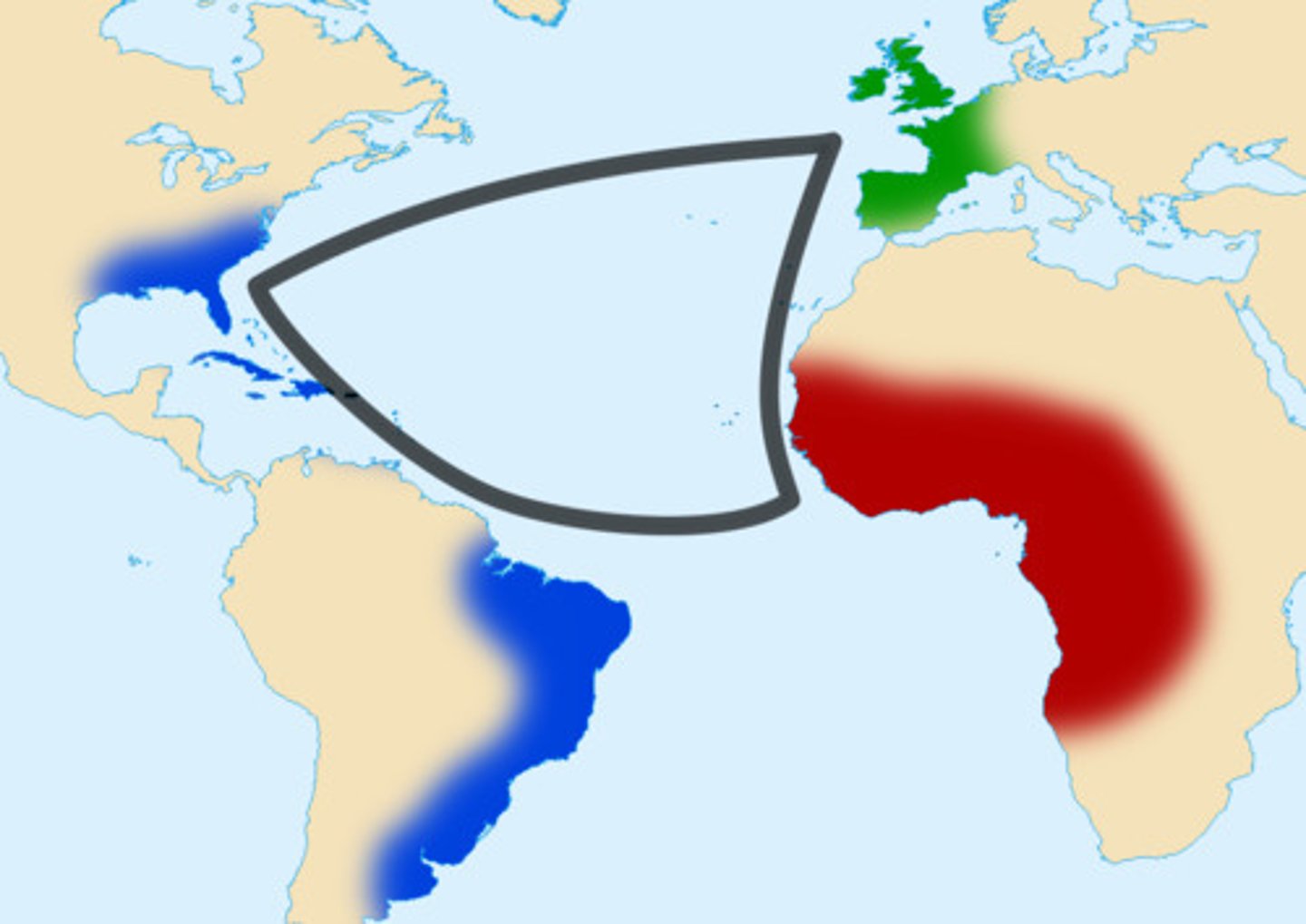
21. American Cash Crops--Sugar and Tobacco
-The Europeans created colonies in the United States and used enslaved labor to create __________ crops as part of the Columbian Exchange
-These were American luxury crops that were not vital or required for people's diets in Europe and the Middle East, but they were sold for lots of profit and money
-These two ___________ crops grown in America and sold in European and Middle Eastern markets were _______________ and ____________________
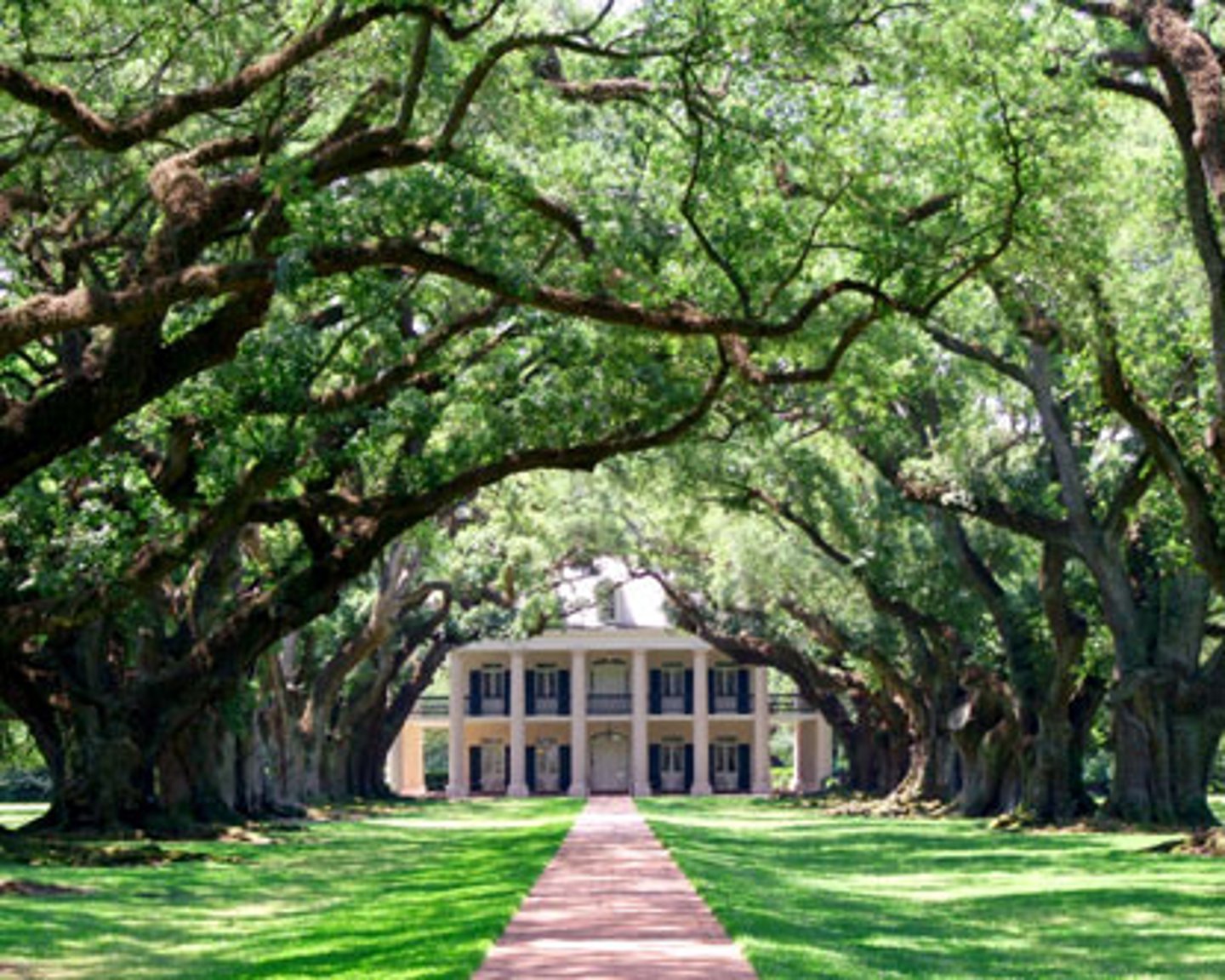
22. Eurasian Domesticated Animals--Pigs, Cattle, Horses
-These were Eurasian domesticated animals that were brought to the Americas as part of the Columbian Exchange
-Two of these domesticated (tamed) animals were raised in the Americas to provide food for American populations
-One was used by American Indians for transport and warfare
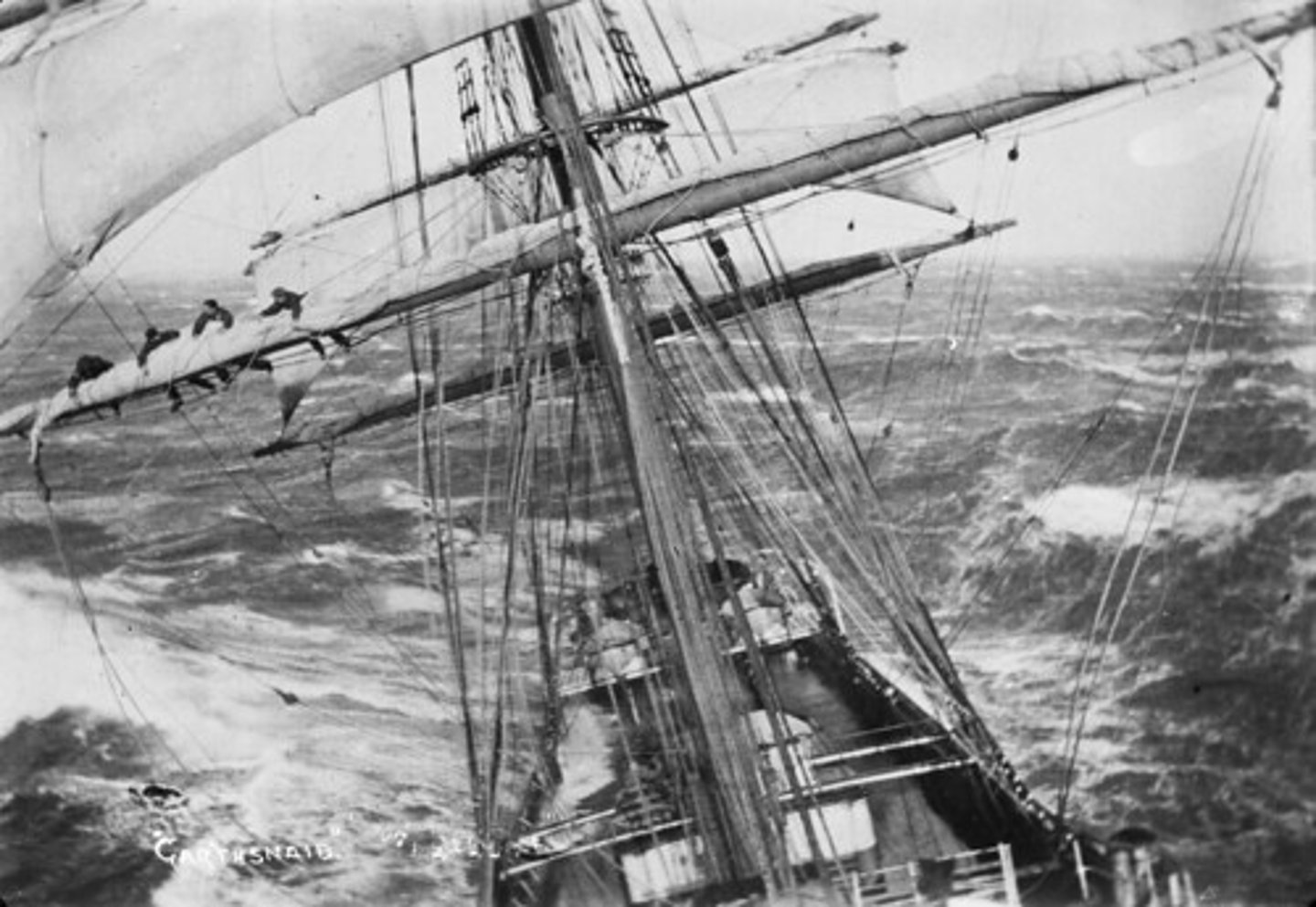
23. Okra, Rice
-These two food crops were brought by enslaved Africans to the Americas and were grown as food crops in the Americas
-This was part of the Columbian Exchange
-AFRICAN CROPS, brought by enslaved Africans, to the AMERICAS
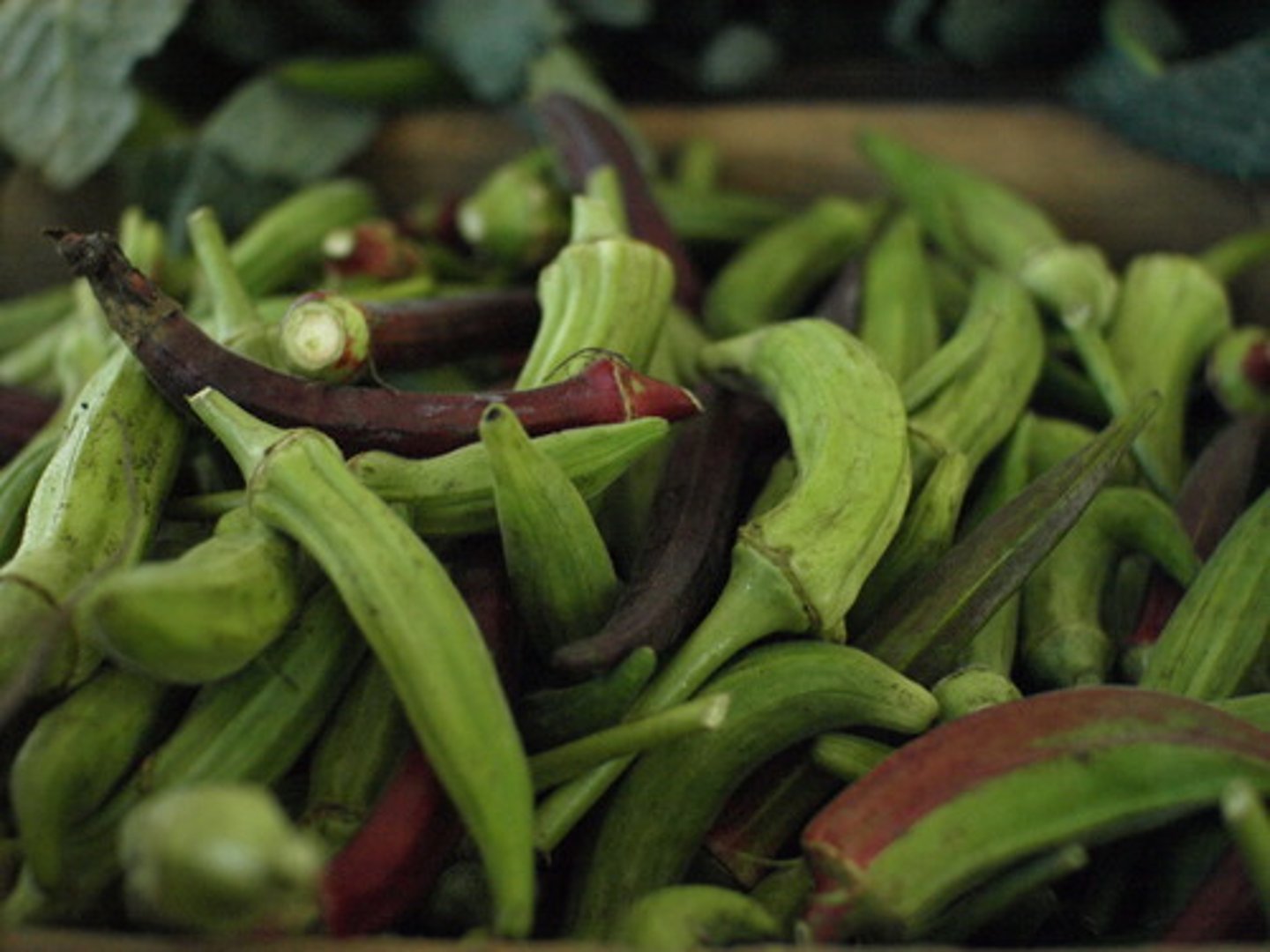
24. Fruit Trees Brought to the Americas
-As part of the Columbian Exchange, Europeans and Africans brought fruit trees to the Americas
-The Banana arrived in the Americas thanks to the Columbian Exchange
-Citrus Fruits--the orange, lemons, and limes all arrived to the Americas via the Columbian Exchange. These fruit trees were critical for the diet of European colonists in the Americas, as they provided Vitamin C and helped avoid the disease scurvy
-These fruits all became popular in the European colonies in the Americas and now fruits like oranges and orange juice are a multi-billion dollar industry in the United States, all thanks to the Columbian Exchange

25. Nutritional Effects from Columbian Exchange
-As the American crops from the Columbian Exchange spread around the world, it had a huge demographic (population) impact as populations around the world skyrocketed
-crops like manioc in Africa, and the potato in Europe and Asia, had a big impact because it improved the ___________________ of people's diet.
-So this means there was a big improvement in ______________ from the __________________ Exchange.
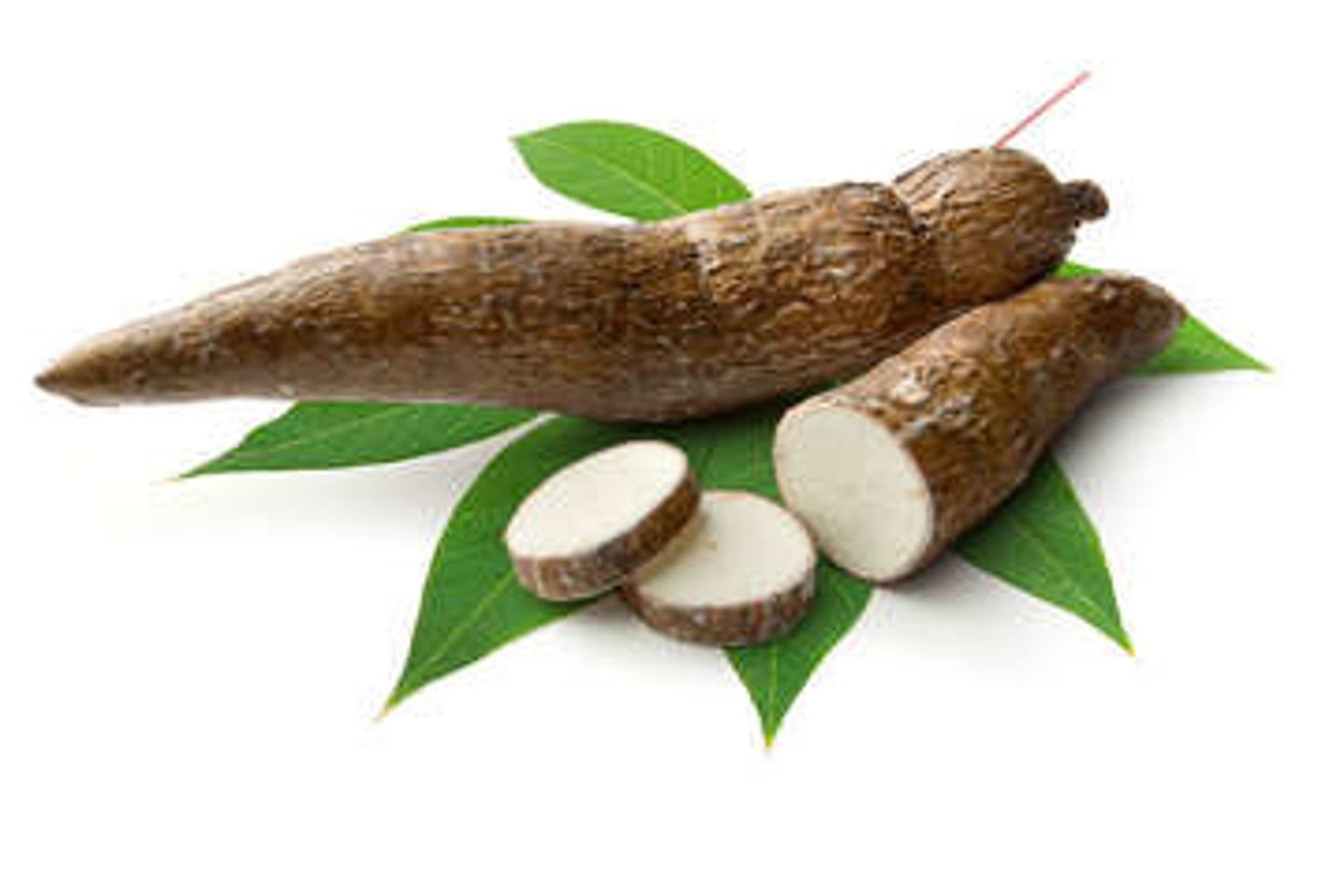
26. Effect of Columbian Exchange on the Environment
-The Columbian Exchange led to a MASSIVE increase in agriculture in the Americas
-European agricultural technology made a HUGE difference in the Americas and European colonists began farming all over North and South America
-European farming practices had a HUGE impact on the _________________________ of the Americas as lots of soil was depleted and forests were destroyed
-So the big takeaway here--the Columbian Exchange and European farming really DAMAGED the American _______________________ because the forests were cut down for wood and soil was robbed of nutrients
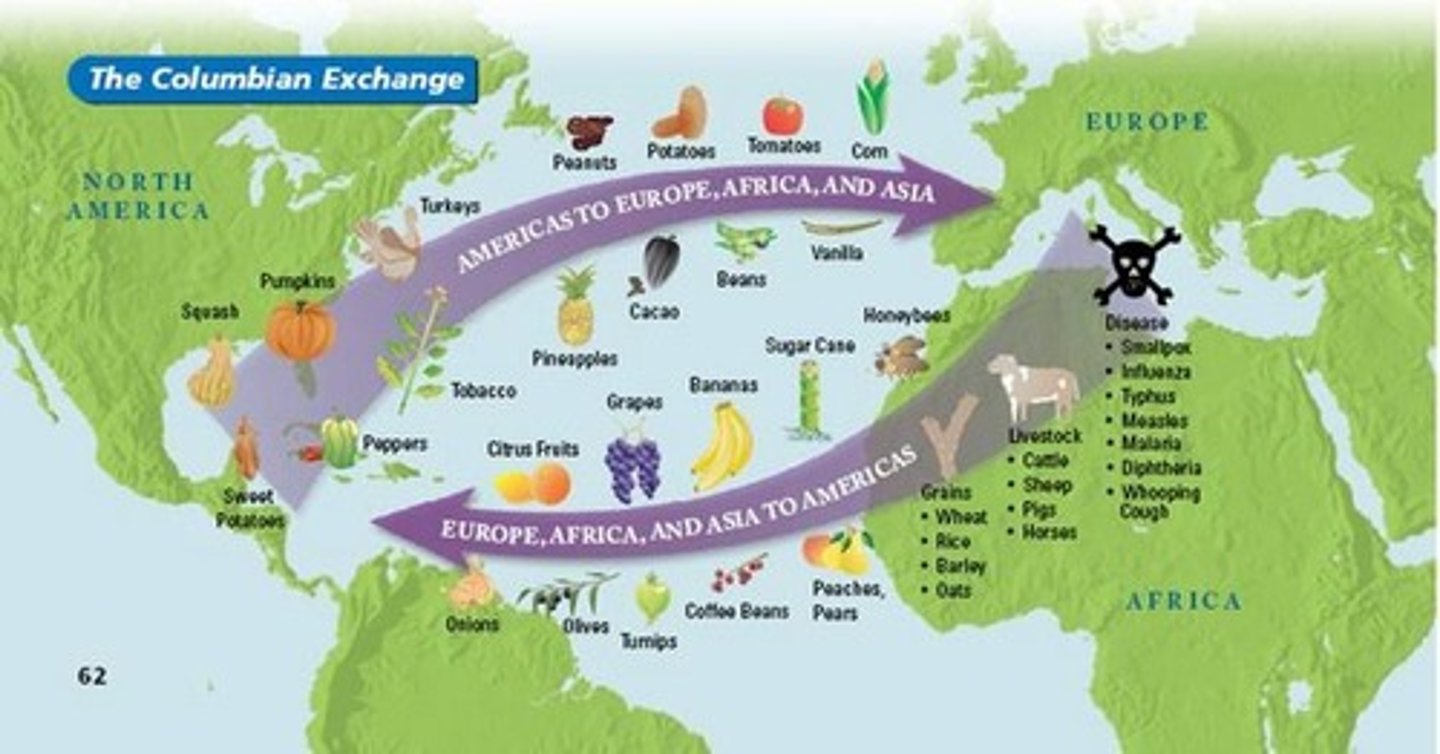
27. Demographic Impact of the Columbian Exchange
-As American foods from the Columbian Exchange spread around the world, populations around the world skyrocketed because of the nutritional value of American foods
-Foods like manioc, potato, and maize had tons of calories, so populations in Eurasia and Africa went up
-The native Amerindian population PLUMMETED because of the diseases brought by the Europeans
-Demographics is a fancy word for "Population Statistics"
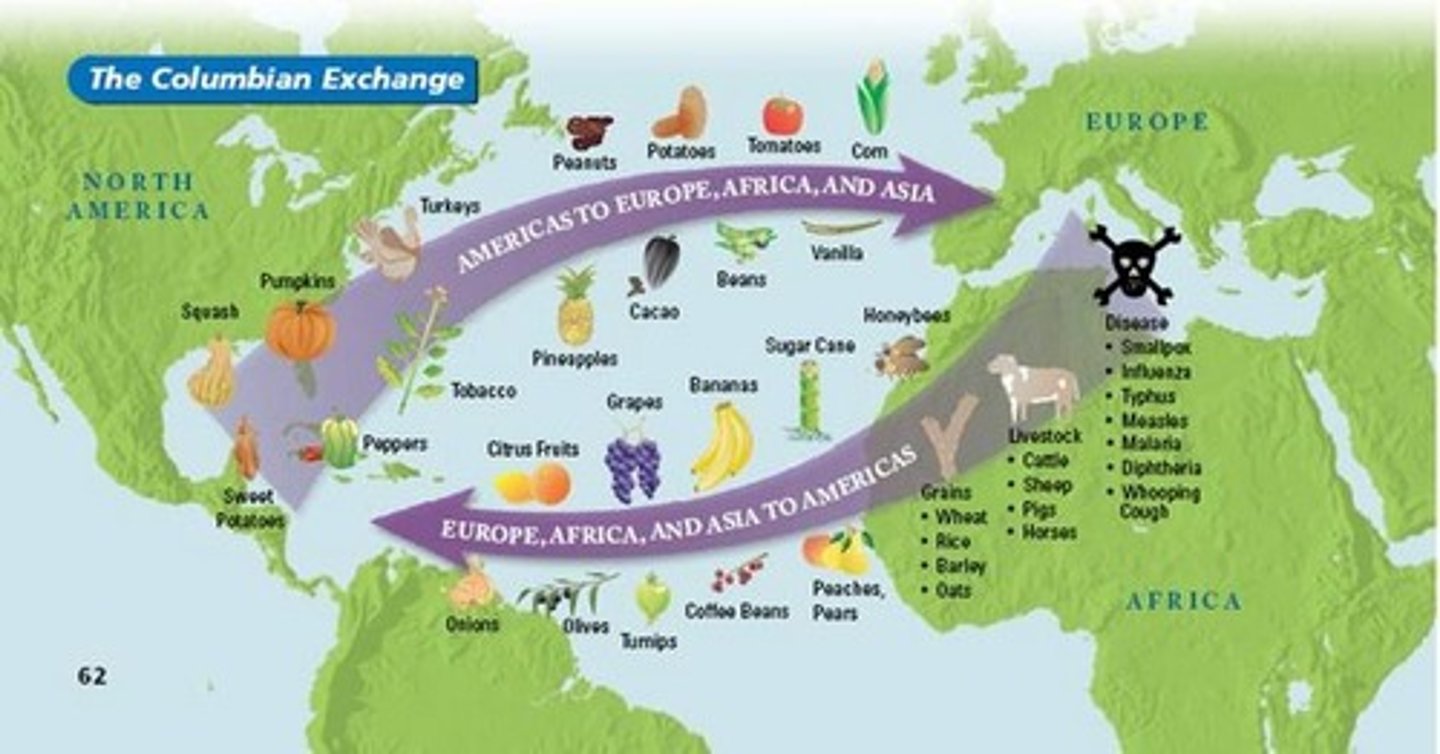
28. European Presence in Africa, 1450 - 1750 CE
-In Era 2, 1450 - 1750 CE, under the sponsorship of Prince Henry the Navigator, the Portuguese began exploring the African coast and building trading posts
-Many Europeans followed the Portuguese and began a profitable trade in enslaved persons [slaves], gold, and ivory along the West Coast of Africa
-However, in Era 2, 1450-1750 CE, European presence in Africa mostly remained limited to the coasts. The Portuguese established the colony in Angola (Queen Nzinga), but for the most part, most of Africa remained un-colonized
-The African kingdoms like the Ashanti helped keep the Europeans from gaining too much power in the interior of Africa
-The Ashanti were a powerful, warlike kingdom in present day Ghana that helped keep European presence in check
-Eventually, in Era 3, 1750 - 1900, the Europeans would industrialize and would be able to take over Africa during the Scramble for Africa.
-However, it's important to remember that in Era 2, 1450-1750 CE, powerful African kingdoms like the Ashanti, along with other factors, kept the Europeans in check and kept them limited to the coast!
![<p>-In Era 2, 1450 - 1750 CE, under the sponsorship of Prince Henry the Navigator, the Portuguese began exploring the African coast and building trading posts</p><p>-Many Europeans followed the Portuguese and began a profitable trade in enslaved persons [slaves], gold, and ivory along the West Coast of Africa</p><p>-However, in Era 2, 1450-1750 CE, European presence in Africa mostly remained limited to the coasts. The Portuguese established the colony in Angola (Queen Nzinga), but for the most part, most of Africa remained un-colonized</p><p>-The African kingdoms like the Ashanti helped keep the Europeans from gaining too much power in the interior of Africa</p><p>-The Ashanti were a powerful, warlike kingdom in present day Ghana that helped keep European presence in check</p><p>-Eventually, in Era 3, 1750 - 1900, the Europeans would industrialize and would be able to take over Africa during the Scramble for Africa.</p><p>-However, it's important to remember that in Era 2, 1450-1750 CE, powerful African kingdoms like the Ashanti, along with other factors, kept the Europeans in check and kept them limited to the coast!</p>](https://knowt-user-attachments.s3.amazonaws.com/dce82524-2b3e-4feb-8954-90c725ea430f.jpg)
29. 1492 -1800 CE
-Everything having to do with colonization and transAtlantic trade in the Americas happens AFTER Columbus
-The Dates of the Columbian Exchange
